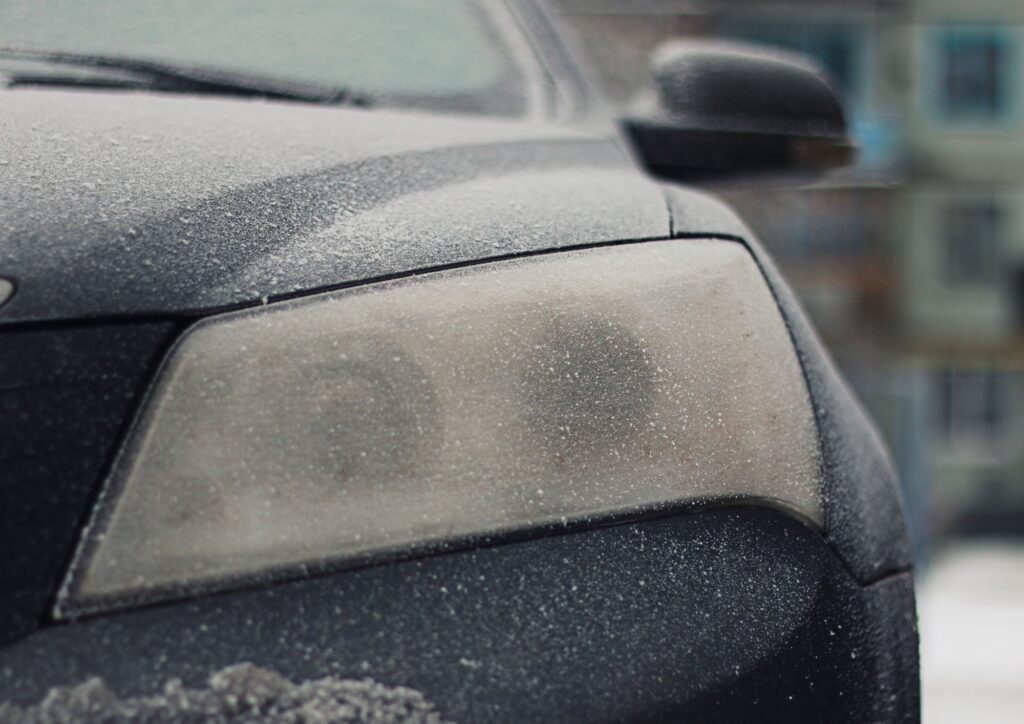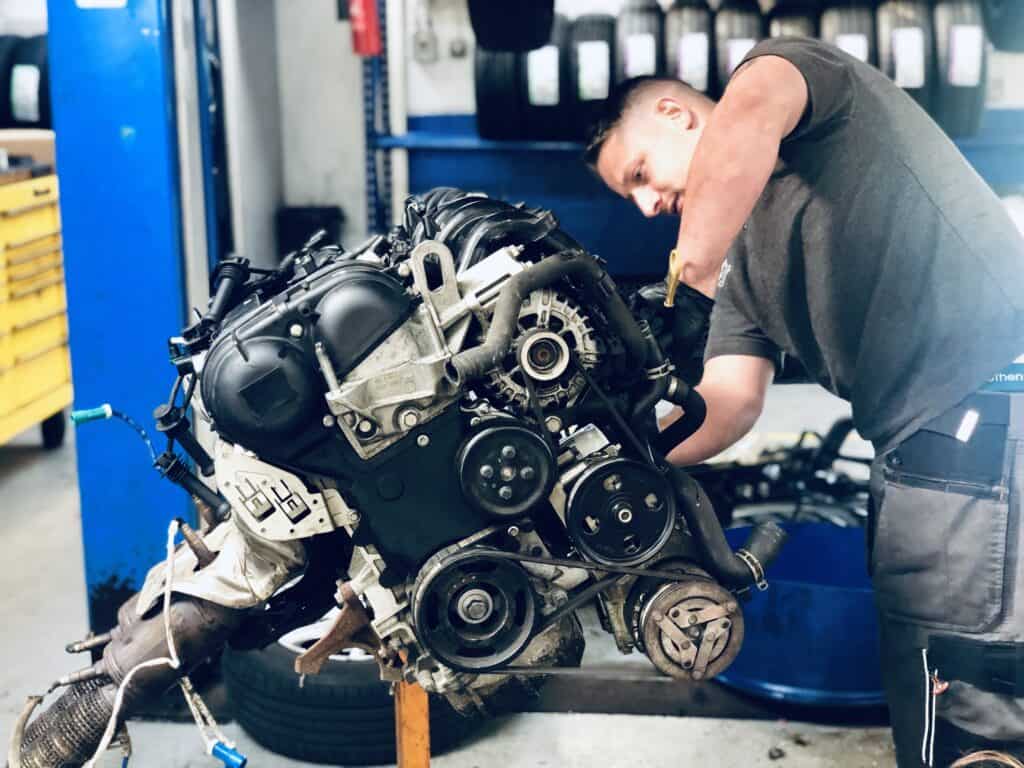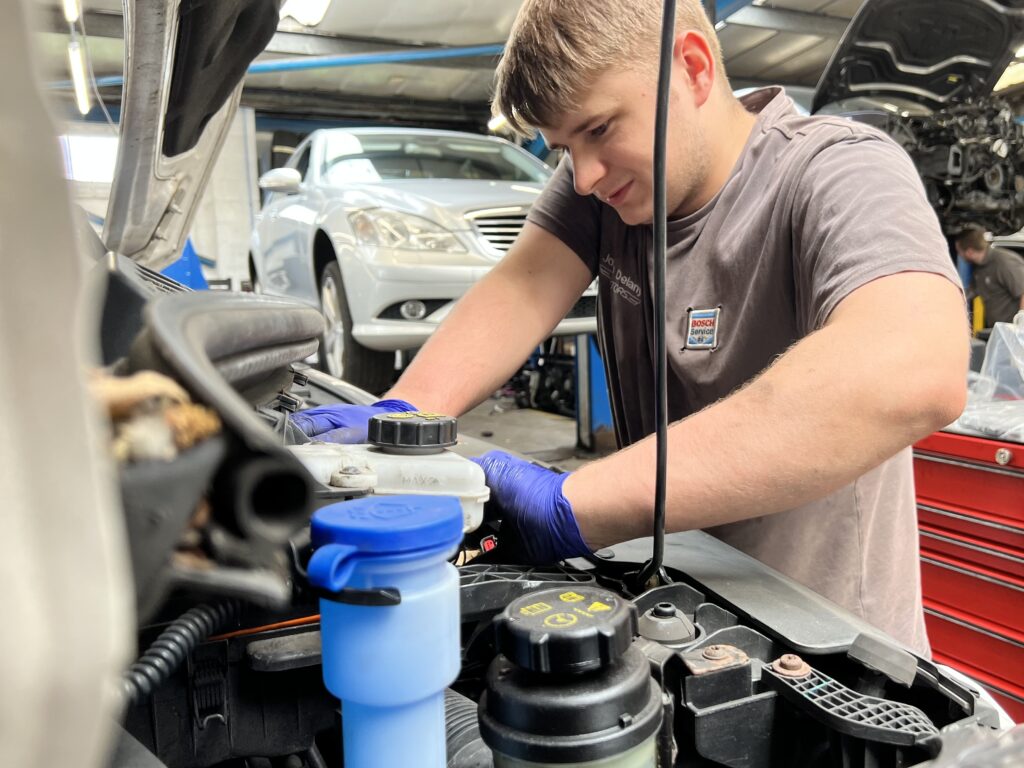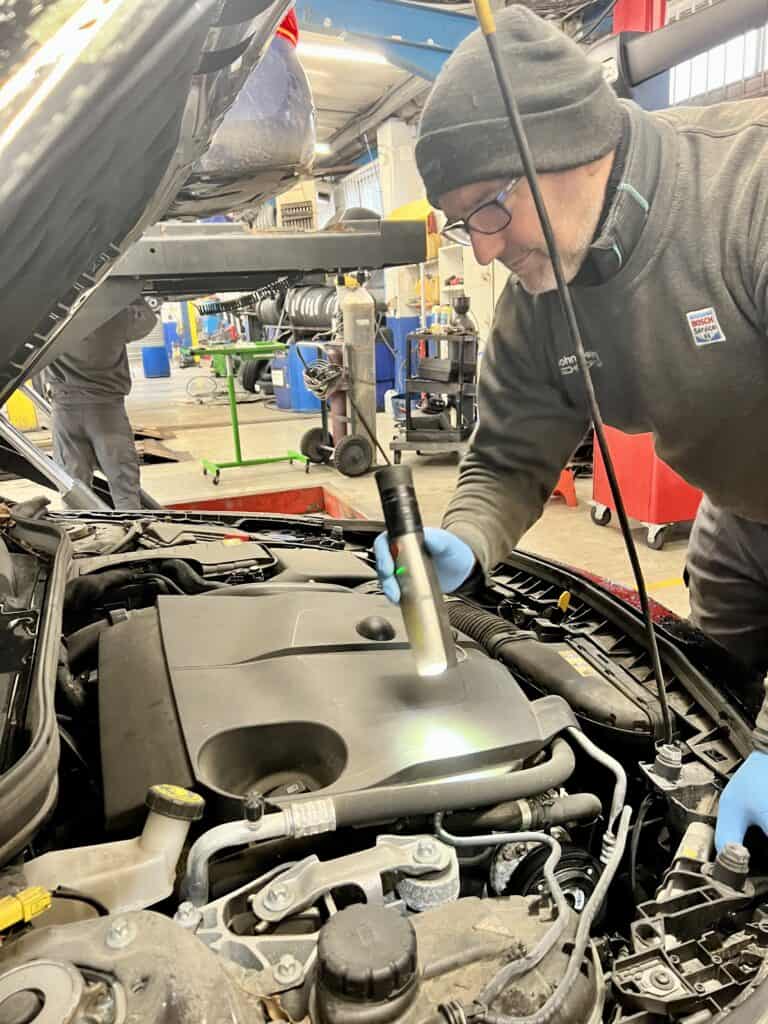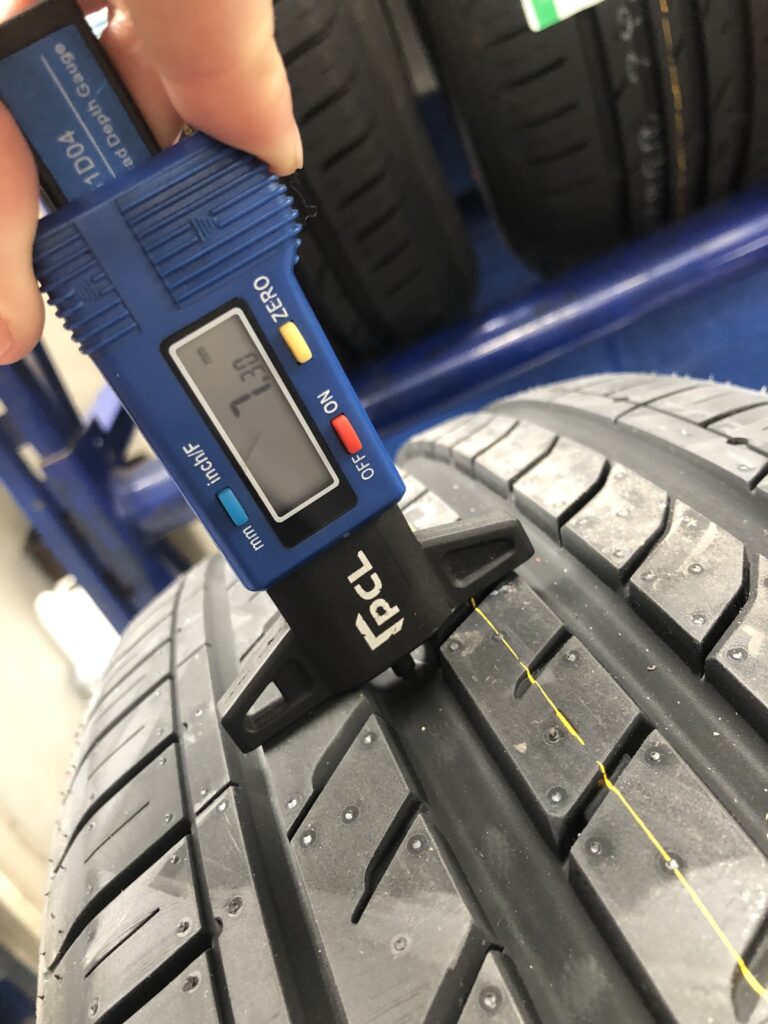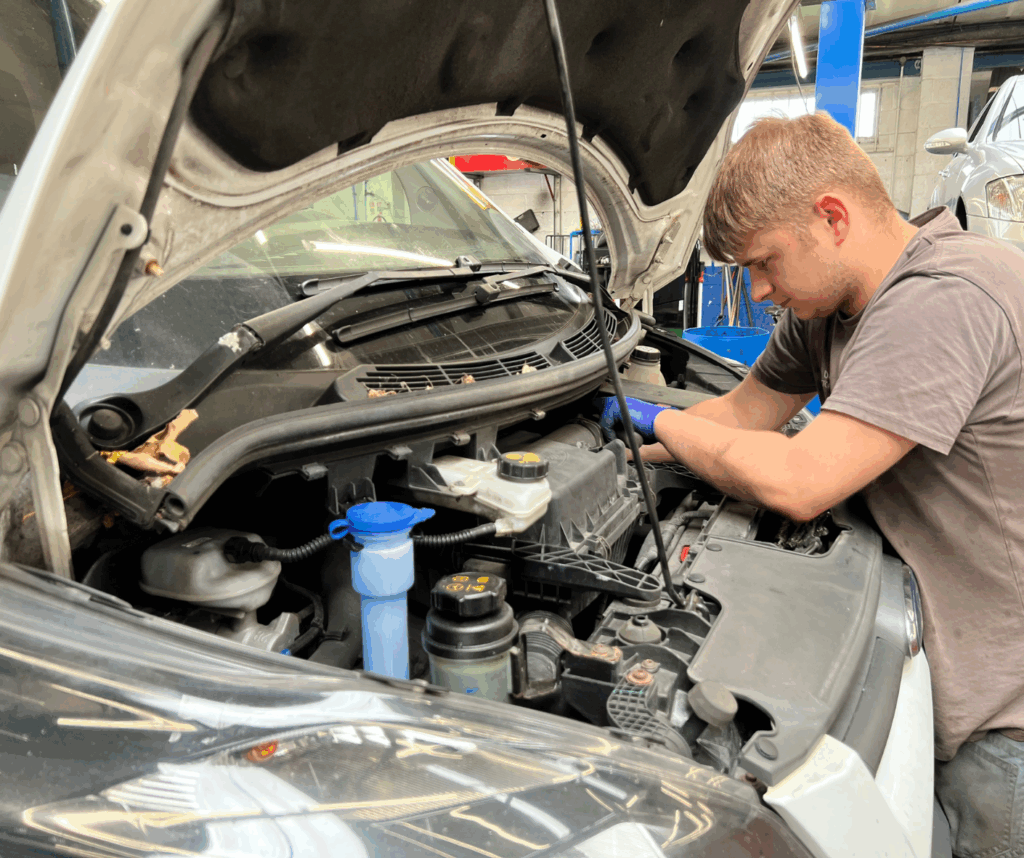9th September 2024
Dipsticks, brake bleeding and checking your engine oil
If you struggle to keep track of all the various fluids in your vehicle and when to check them, then this guide is exactly what you need to get started.
What Are the Different Fluids and Oils in My Car?
There’s valves, tanks, tubes and pipes; hydraulic fluids, oils and coolants. It can be a lot to remember when you have a car, and making sure that you keep everything running smoothly requires more work than just waiting for your ‘check engine’ light to come on. Luckily, most fluids in your car can be checked a couple of times a year, and your vehicle manual will tell you where everything is, but you still might be wondering what all of these different fluids are, and why they matter.
In this article, we will cover most vehicle fluids from brakes to power steering, but it’s still important to speak to your mechanic as part of your regular vehicle checks, to make sure you’ve not missed anything.
Brake Fluid and Bleeding Your Brakes
For your braking system to function properly, it relies on a hydraulic fluid which amplifies the force of the brake pedal. Brakes are one of your car’s most important safety features and it is vitally important that you understand when and how to check your brakes.
If the brake fluid level is below the minimum, do not drive your vehicle until this has been refilled. This is something that you should be checking every month. Always see your vehicle handbook or speak to a mechanic to make sure that you are using the correct fluid; there are many systems in your car which require hydraulic fluid, but these are not interchangeable and putting the wrong fluid somewhere is a bad idea. If you find yourself in a situation where you have used the wrong fluid in your car’s brake system, or anywhere else, speak to a mechanic immediately so that they can advise you on how to fix it.
Brake fluid replacement should be done every 2-3 years, and this is the process of emptying out the old brake fluid from your system and replacing it with new fluid. Bleeding your vehicle brakes can require specialist equipment which is why its always best to get this done by a trained mechanic. Please contact us to book in and we will gladly sort this out for you.
Engine Oil
It is the job of engine oil to lubricate the internal combustion engine so that it can function properly. The type of oil varies for diesel and petrol cars, and you should always check your handbook for which one is right for you. Checking your engine oil level should only take you a few minutes using the dipstick. We recommend following your manufacturers guidelines for how often to carry out an oil change. Each vehicle also requires a specific oil, it is imperative that the correct specification of oil is used and is also worth noting that some long-life oils have a longer service life.
Engine Coolant
Your vehicles cooling system uses coolant (antifreeze) to control engine temperature and prevent overheating. Coolant also stops the cooling system from freezing in subzero temperatures and protects the engine from corrosion. It has a recommended ratio of 50/50 anti-freeze and water. Most modern cars have sealed cooling systems, so there should be no need to top this up unless there’s a leak. You should check this twice a year; just before summer and again at the start of winter.
Make sure that your engine is cooled completely before opening the coolant filler cap (wait at least 30 minutes after your engine has been switched off). Whilst you’re refilling it, you should check the hose for signs of coolant leak; if you see signs of wet outside of the hose, or stains, there is a chance you have a leak and you should see a mechanic. Most cars are also equipped with a dashboard warning light to also let you know if there’s a problem.
Transmission Fluid
Transmission fluid is, unsurprisingly, used to lubricate the car’s transmission along with hydraulic pressures required to drive transmissions. It needs changing according to manufacturer’s recommendations.
Transmission fluid levels should always be checked by a professional.
Power Steering Fluid
This is another type of hydraulic fluid that your power steering system uses to make turning your steering wheel easier. New power steering fluid will be coloured but transparent, so inspecting your fluid is as simple as removing the cap off the top, shining a torch over it, and checking whether the fluid has turned dark brown or black – this is when it will need replacing.
Your power steering fluid should last 2-3 years, but you should perform visual inspections a couple of times a year to help you spot leaks early. If you notice a leak, or if your steering wheel suddenly feels harder to turn or ‘jumps’ when steering, you should take your vehicle to a mechanic straight away.
What isn’t in Your Vehicle Handbook
There will always be a diagram or instructions in your handbook to show you where each tank, dipstick and reservoir is, and these will usually have icons on them to help you find them. Your handbook will also tell you exactly which type of oil or fluid is needed for each system, but it may not be able to help you when it comes to checking and replacing those fluids.
If this is something that you want to do yourself, then we recommend speaking to a mechanic for instruction on how to do this safely, or watching an instructional video made by a professional. But if the idea of doing this yourself and risking an accident, mixing up which fluids to use, or spilling oil all over your garage floor does not sound appealing, then please get in touch with us. One of our vehicle technicians would be happy to assist you as part of your regular vehicle maintenance.
For more information or to book your appointment, call 0161 477 6266, email info@delany-motors.co.uk or book online.



